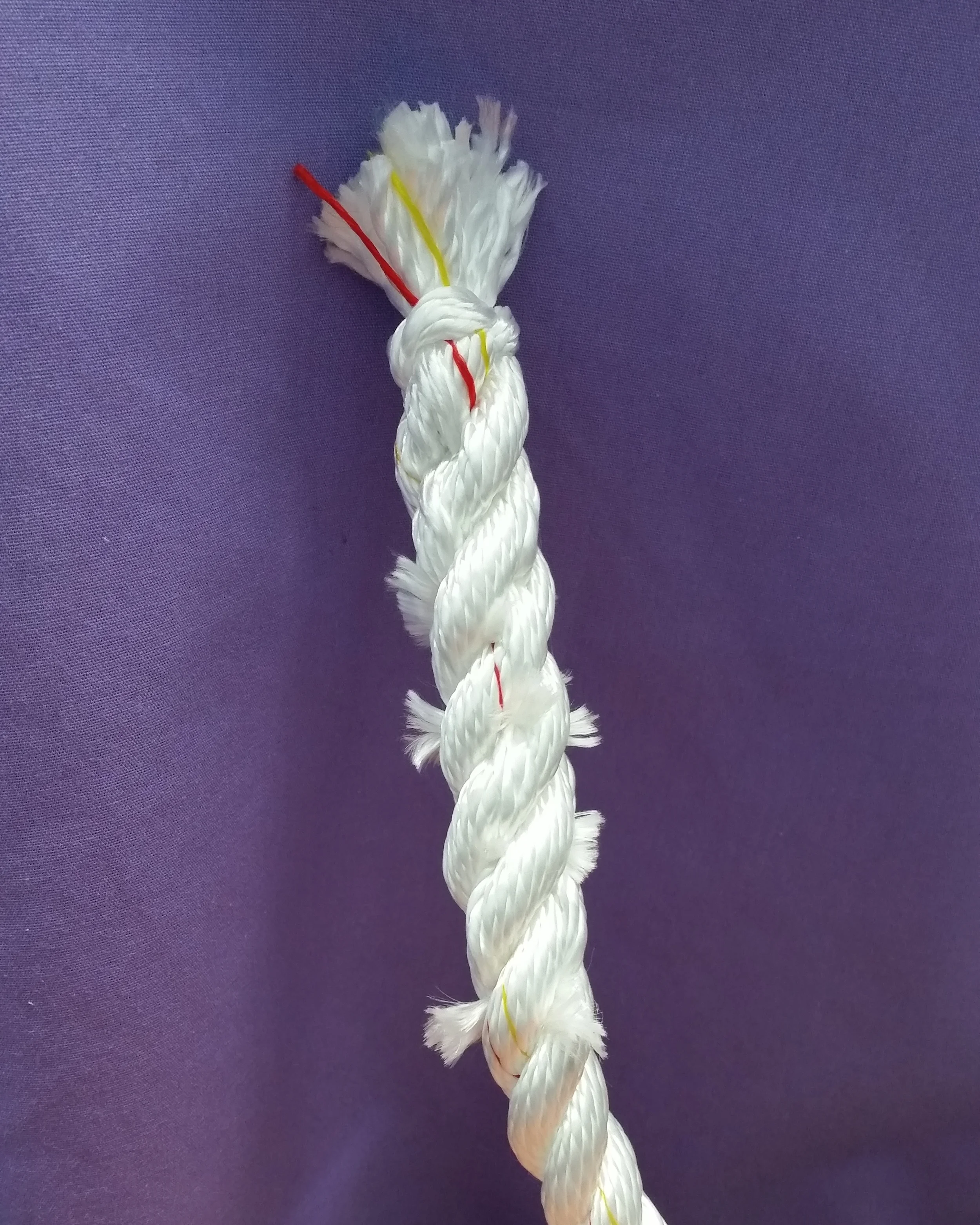Jacklines
While there are many methods to recover a person after a "Man Overboard", the best measure is to avoid them!
While having good handholds, nonskid decks, and secure lifelines are all critical measures; I feel that clipping into Jacklines is a wonderful method to keep you attached to the boat at all times.
Jacklines are a line that runs uninterrupted from bow to stern. The idea is you can clip in and walk from bow to stern without having to unclip. This way, if you fall over, you will be attached to the boat. Instead of trying to recover a person in the water, you simply have to pull them back on deck.
Most recommend using nylon webbing because it lays flat on the deck and won't roll underfoot. This is true, but I have found that they will slide underfoot and cause the same loss of balance.
They also will suffer from UV degradation at an alarming rate. For this reason, they recommend only setting them up when conditions merit, to limit their sun exposure. When conditions merit is when you want to clip in, not when you want to rig them!
I use 1/2" 3 lay nylon rope for my jacklines. They are attached at the bow and stern cleats and run uninterrupted on the deck. They are the same material as dock lines and anchor rode, so I feel better about leaving them in the sun permanently rigged. The moment we feel the need to use them, we have them!
1/2" 3 lay will roll underfoot, so we simply don't step on it, just like we don't step on sheets or jib tracks or slippery painted parts. You will learn your deck and be able to navigate it in the dark!
Our rule is if we go on deck and we are not tied to a pier or anchored to the bottom, we are clipped in! Even on light air days, it would be really annoying to have to jibe the drifter around to pick someone up. If we are clipped in, then we are never disconnected.
There are occasions when we don't follow our own rules, but we both have to OK the decision. Maddie doesn't like to wear her life jacket and harness because it is hot and heavy. When conditions are very light and she is just going to sit on the deck, she will go without wearing it or being clipped in. The important part is we are all in accord on the decisions to keep each other safe while sailing.












